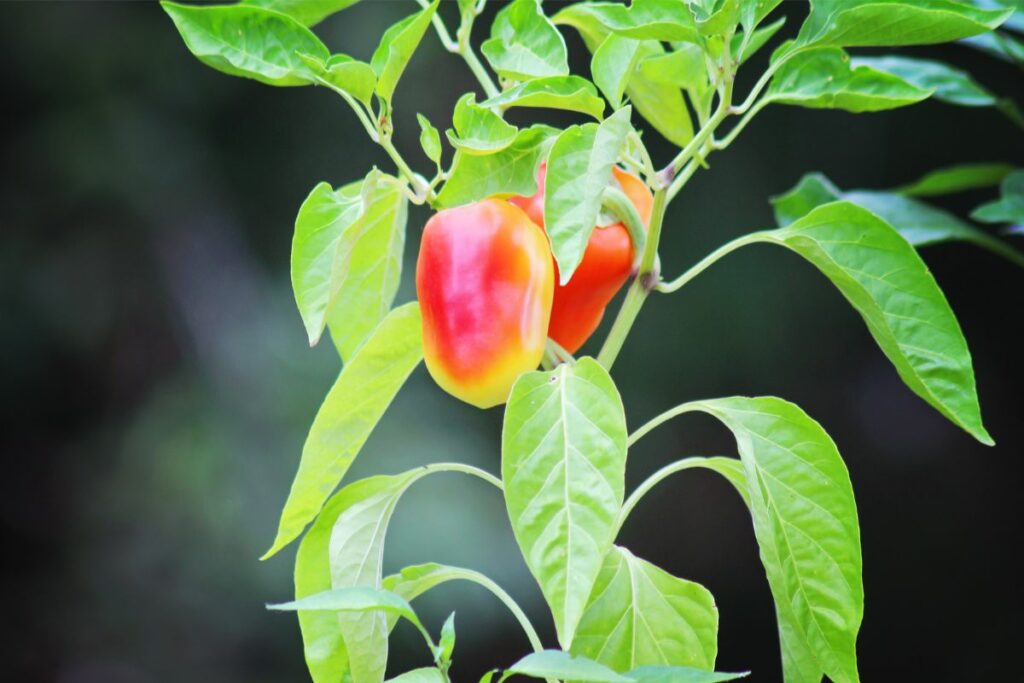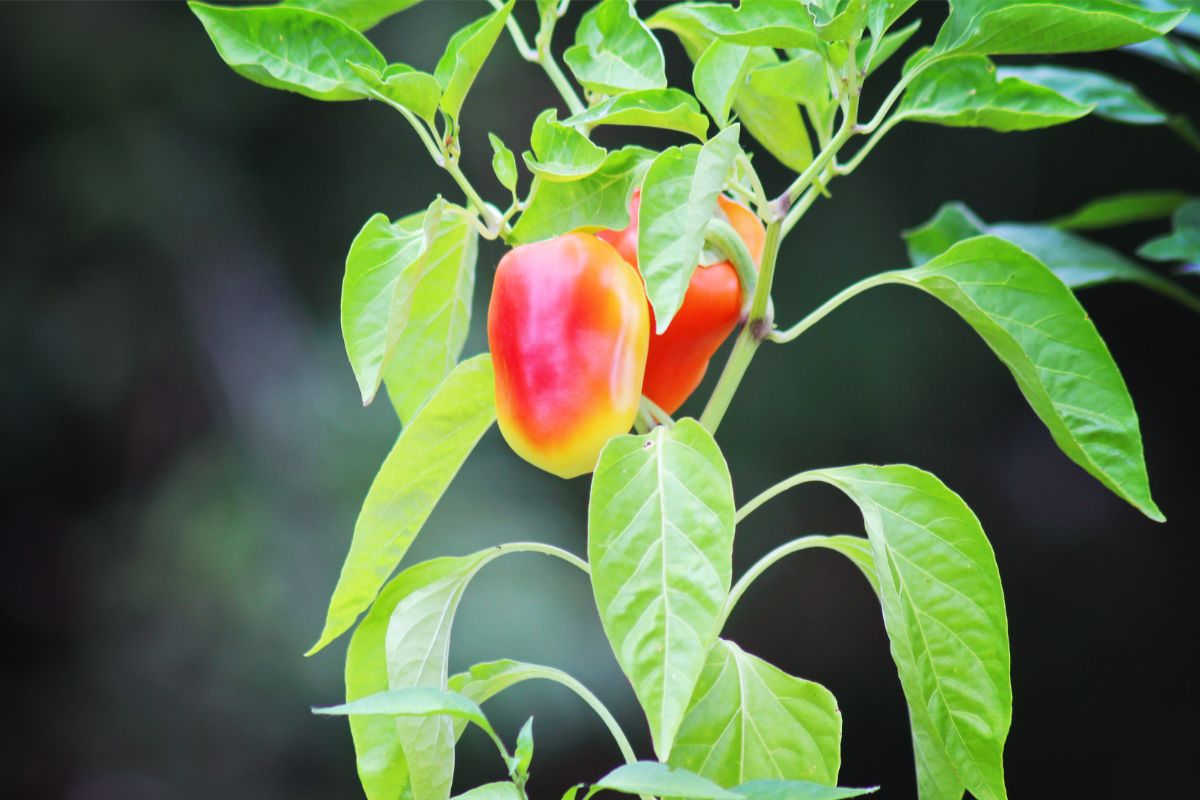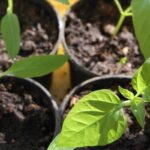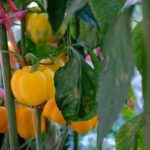Having limited garden space, or no space at all, shouldn’t be a complete barrier to growing your own produce.
You can grow many items just as easily indoors or in pots on your patio.
Start with growing herbs indoors to see how you get on, and then you can branch out and try to grow things you haven’t tried before.

It can be a great idea to try to grow those items that keep popping up on your shopping list once you’ve learned the basics.
If you enjoy salads and particularly Tex-Mex food as much as I do, then I would recommend that you have a go at growing bell peppers indoors.
I’ve created this helpful guide for new gardeners to talk you through growing bell peppers indoors for yourself.
Make Sure That The Conditions Are Right
As with most produce, spending the time to ensure that the growing environment is well-suited to what you want to grow makes all the difference – and this general rule of thumb also applies to bell peppers.
When growing your bell peppers indoors, you’ll need to start off by planting them in pots.
The method will offer the biggest chance of success as you can move the pots to ideal locations, allowing the best chances for healthy seed germination.
Specifics for this growing environment include lots of direct sunlight, so place the pot next to a window if you can.
Ideally, on a south-facing windowsill that naturally captures plenty of sunlight.
If you have a greenhouse or conservatory, then, even better – place the pot in there so you can keep an eye on its progress.
If you have a small patio or a balcony, you can pop your pot in a sunny spot there.
Pick The Correct Time To Sow The Bell Pepper Seeds
It may prove surprising to learn just how early you need to sow bell pepper seeds.
I’d look at between mid-February and early April to sow the seeds in compost.
Try to sow them alongside other crops that are relatively easy to grow. For instance, if you are using pots to grow tomatoes, then sow the bell pepper seeds at the same time – they make good accompaniment plants.
A Step-By-Step Guide To Growing Bell Peppers Indoors
If you’re learning how to grow produce indoors, then you should already have plenty of the necessary equipment for bell peppers, from a seed tray or small pots to some seed compost and support stakes.
You will also need a watering can and some vegetable fertiliser.
There are also a couple more items for potting on including some half-litre pots (measuring 9cm) and five to seven-litre pots (measuring 20 to 25cm) with some multipurpose compost.
Fill your seed tray or small pots with the seed compost, and make sure it is moist but not soaked when you use the watering can.
Sow the bell pepper seeds, making sure you’ve selected a variety that is well-suited to growing in a pot.
There are plenty of other pepper varieties alongside bell peppers that you can grow indoors, too.
Sweet peppers known as ‘Popti’ are a good option for a pepper that changes colour as it ripens. ‘Reggae’ is a hot pepper that can grow well in a pot, as can ‘Lemon Dream’, which is relatively compact.
Whichever seeds you decide on, sow them around 2cm apart from each other then sprinkle on some more compost.
Be patient and wait for the pepper seeds to germinate. I tend to cover mine with a plastic bag to keep them warm and moist – the benefit of the plastic bag, though is that I can also keep an eye on their progress.
Regularly watering your bell pepper seeds is important, but I’d advise you to check the soil first.
If the soil seems dry to the touch, then get out the watering can but refrain from sprinkling on any water if the soil feels damp.
Try to use a watering can as you can direct the water onto the soil rather than the leaves.
Even the timing of the day is important when it comes to watering – I would look to do this in the morning before it gets warmer closer to midday.
Move the seedlings to enhance their growth after around two to three weeks.
Once the plants have a couple of leaves, it should be time to move to bigger pots.
Use half-litre pots to keep bell peppers healthy for around six to eight weeks.
Soon enough, your plants will begin to grow their half-litre pots, and it will be time to move them on.
Once they reach a height of 10cm, move the plants to your bigger five to seven-litre pots, as they can eventually grow to around 60cm tall.
At this point, you may want to add some support stakes into the pots to encourage good growth.
If you can, stick to plastic pots, as terracotta ones can dry out, and you need moist soil for your bell peppers.
If you do decide to move your bell peppers outside then ensure that there are no remnants of frost on the ground. But, if you’re restricted to growing indoors, that’s totally fine too – just continue to maintain the right conditions for a healthy harvest.
Thankfully, once grown, bell peppers can be largely left alone.
You may want to pinch out any growing tips when they reach about 20cm, as this will encourage bushy growth.
If the weather becomes hot, mist your pepper plants to top up the humidity, and this will also help to fend off spider mites.
Picking Bell Peppers
Your bell peppers should be ready and ripe for picking from around late summer.
They might be green, in which case the ripening to a red or yellow colour can finish once picked if you like your bell peppers sweet.
Final Thoughts
Having a small garden, or no outdoor space at all, doesn’t mean you can’t grow delicious produce.
If you’ve wanted to try growing bell peppers, but have been worried about space, the good news is that you can grow bell peppers indoors.
I’d recommend feeding your bell pepper plants with a fertiliser which is high in potash once they begin to flower.
Keep an eye on your bell peppers and their soil through each growth stage.
Once they have ripened, they are ready to be picked and enjoyed in plenty of recipes.
- Can You Grow Bell Peppers Indoors? A Guide For New Gardeners - November 14, 2023
- Composting Basics: Can You Compost Mushrooms? - November 6, 2023
- A Gardener’s Guide To Growing Carrots In Raised Beds - November 1, 2023



